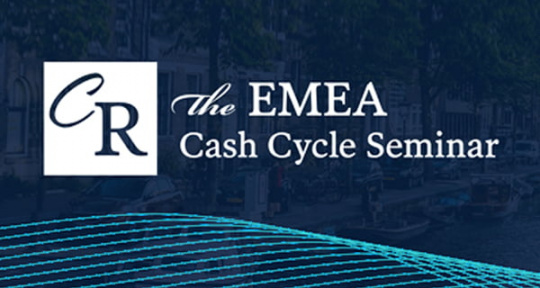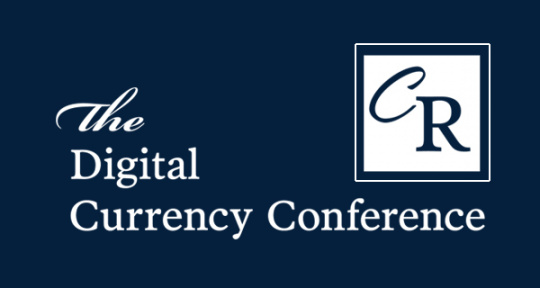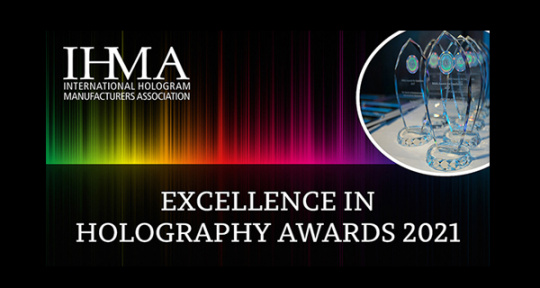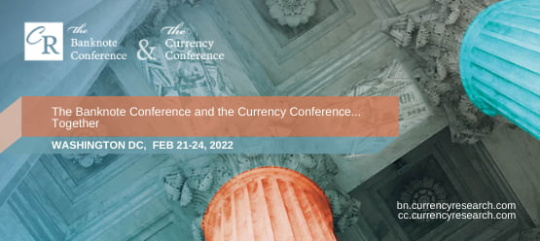Circulation coins: problems and solutions
01.08.2011
The first international conference on circulation coins was held in London.
Keep an eye on the Pennies, and the Pounds will take care of themselves, says a national English proverb. Until now, among all forums and conferences there was no event on the circulation coins. The Coin Conference, held in London on May 31 — June 1, 2011 became the first event in the history, covering the multifaceted problems associated with the issuance, distribution, handling and recycling of circulation coins. It was organized by Currency Publications Ltd, Chairman — Rick Haycock. The conference audience consisted of 190 delegates from 110 organizations and 40 countries around the world. Publishing house “InterCrim Press” was presented as media partners of the event.
“There is still a key role for cash, even in the age of electronic payments”,— so said Economic Secretary to the UK Treasury, Justine Greening, in her keynote address to the Coin Conference delegates. The inaugural Coin Conference was the first event of its kind to focus on the challenges and issues faced by circulating coins in the context of countries’ currency management strategies.
The audience comprised representatives from central banks and issuing authorities, mints and suppliers of material and equipment for the production, handling, processing, verification, distribution and reclamation of coins. In her speech, Ms Greening welcomed the delegates to London, giving a history of coinage in the UK and of the Royal Mint, which is the responsibility of the Treasury. She also spoke about the importance of coins as part of the UK’s payments structure in terms of facilitating commerce, along with the need to imbue the public with confidence in these while providing them in the most efficient and cost-effective manner.
Her speech touched upon two of the key themes of the conference — namely cost impact and reduction, and optimising coins in circulation — with a number of presentations on these themes. Also security and authentication, features and materials, meeting demand and engaging the public were covered in detail.

Coins as a part of cash circulation
Session began a series of presentations focusing on overall evaluation of coins as a means of payment. Paul Blond of the Blond Group, Australia presented his view of the problem switching from cash money to electronic payments. In his speech he juxtaposed data on the continuing rise of cash in circulation in all the major economies over the past decade with a cautionary note on the potential of new forms of cashless payment — in particular contactless cards, mobile payments and the new Google wallet — to displace cash transactions at the low value end of the payments spectrum.

While the threat of cashless payment is one major concern to the industry, another is the note/coin boundary, particularly for mid-value denominations. Methodologies for calculating where this boundary should “sit” were presented by Jonathan Ward of Secura Monde International, while Mark Shaw of the Royal Mint demonstrated the potential for greater efficiencies by moving this boundary to accommodate more high value coins in place of notes.

Mark Shaw

Ger Koole
Ger Koole, from the VU University of Amsterdam, looked at circulation from another angle — namely patterns of circulation. This is normally difficult to measure since coins, unlike banknotes, have no form of unique identifier. Euro coins, however, all bear the image of the country that issued them, and these images make it possible to track the spread of the coins beyond their borders. From the research done thus far on Dutch coins, he and his colleagues have devised a model to predict future dissemination of euro coins, which he explained in his presentation.
In the context of public demand and acceptance, Brian Lang covered the topic of good coins/bad coins in terms of optimum designs, sizes, weights and denominational structure for public use and acceptance, as well as cost-effectiveness.

Brian Lang
He provided example of both good and bad, concluding that the series of new coins in 2006, for which he was responsible during his 40 years tenure at the Reserve Bank of New Zealand, is an example of the former!
Genie Foster, formerly of the Federal Reserve Board, spoke on the topic of the dark side of seigniorage , with specific reference to the costs that the US government is incurring in producing commemorative and dollar coins that the public does not appear to want, thereby building up a balance sheet liability and losing income that could be better invested elsewhere.

David Wise of the US Government Accountability Office also spoke about the dollar coin, this time in the context of the savings that the US government could make — up to $5.5 billion over 30 years — if it was to replace the dollar bill with a coin, according to a new report recently published by the GAO.
Marten Gomer of Sveriges Riksbank, in his presentation on the programme in Sweden to redesign the country’s note and coins, showed how reconfiguration of the coin denomination structure and the switch to smaller, lighter coins will result in a 70% saving on the costs of coin purchase. This, together with the income from reclaiming and recycling old coins, will be nearly enough to finance the total costs of the note and coin changeover over a seven period.

Authentication of Coins in Circulation
Critical to the note/coin boundary debate is the ability of higher value coins to offer security on a level comparable to low denomination banknotes. This has to date been an enduring problem for the coin industry, but several of the presentations demonstrated new features and technologies that offer the opportunity for considerably improved overt and covert security for the public and cash handlers alike. These included one from Maarten Brouwer of the Royal Dutch Mint, who provided examples of new features that owe much to classical banknote security technology such as intaglio printing and microtext, which can now be incorporated into coins to create optically variable and latent image features.
Maarten Brouwer
Tal Gilat of InkSure covered the topic of taggants — forensic markers that provide unique covert identification — and how these could provide a security solution in future for coins, either incorporated within the alloy or added in the form of a special coating.
Thomas Bilas of blank specialist Saxonia EuroCoin, now part of the Mint of Finland, gave an overview of different coinage materials with particular reference to electroplated version and the security and cost attributes of these. He also took the opportunity to introduce HealthGuardCoin, a new blank with anti-bacterial properties. While paper substrates with such properties are already available on the market for banknotes, this is the first time an anti-bacterial coin material been developed.

Leon Dieters
A final presentation on the topic of security came from Leon Dieters of Kusters Engineering, who described how in-house coin crushing equipment can substantially reduce the costs of decommissioning coins by rendering them worthless, and hence much cheaper to transport to scrap and recycling facilities. The presentation provide a case study of the euro changeover in 2002 and the logistical challenges that were overcome in taking all the Dutch legacy coins out of circulation and selling the metal, which resulted in a benefit to the Financial Ministry of ?60—70 million.

Features of the national monetary circulation
Another major thread of discussion and debate was devoted to the peculiarities of coin circulation of particular countries and the role to be played by national banks in the process. Andrew Wallace of the UK Payments Council provided a case study on coin circulation in the UK, where the Royal Mint’s role is limited to the provision of new coins and destruction of old coins, with all stages of circulation and recycling in between being devolved to the commercial sector. In particular, he explained how the stakeholders work together with the Mint and the Treasury to forecast and then meet public demand.

Andrew Wallace
In complete contrast was the presentation from Lenard Cheung of the Royal Canadian Mint, the role of which is unique in that its mandate dictates not only the production of coins, but also the management of the overall circulation coin distribution system. Duties include forecasting demand, engaging in the strategic rebalancing of coin inventories, monitoring market activity, recirculating coins and the recovery of alloys from withdrawn coins.
Pedro Tordilla of the Central Bank of the Philippines explained how the bank is frequently criticized for not providing enough low denomination coins, despite the fact that ratio of coins in circulation per head of population is higher in the country than almost anywhere else in the world. The problem, he said, is not insufficient supply, but poor recirculation, with coins not getting to where they are needed. Hence the country’s implementation of a National Coin Recirculation Program to ŌĆśflush’ coins out of storage and back into circulation.
Ewout van Haeften of the De Nederlandsche Bank (DNB) spoke about the currency changeover in the three Caribbean islands of Bonaire, Saba and St Eustatius, which have recently swapped the Netherland Antilles Guilder for the dollar. All three are part of the Netherlands and hence the payment system in is the responsibility of the DNB. He described how, working with the US Federal Reserve, the changeover was successfully implemented with particular respect to the coins.
Taking a different tack, Fergus Feeney of the Royal Mint described the Olympic 2012 coin programme. While commemorative coins are well-recognized as a means of engaging the public and generating revenues for mints, even better in terms of their broader public appeal are circulating coins that also commemorate special events. The Royal Mint’s “London 2012 Sports Collection” will see the issue of 29 different 50 pence circulating coins, each representing one of the Olympic or Paralympic sports, and all designed by members of the public.
There were 28 presentations in total, arranged in sessions of four with a panel discussion at the end of each session. A notable feature of the conference was the high level of attendance throughout the two days, the number of questions asked of the speakers and the lively discussions that continued during the breaks and cocktail receptions.
The 2nd Coin Conference will be held in June 2013.




